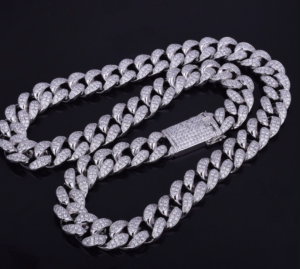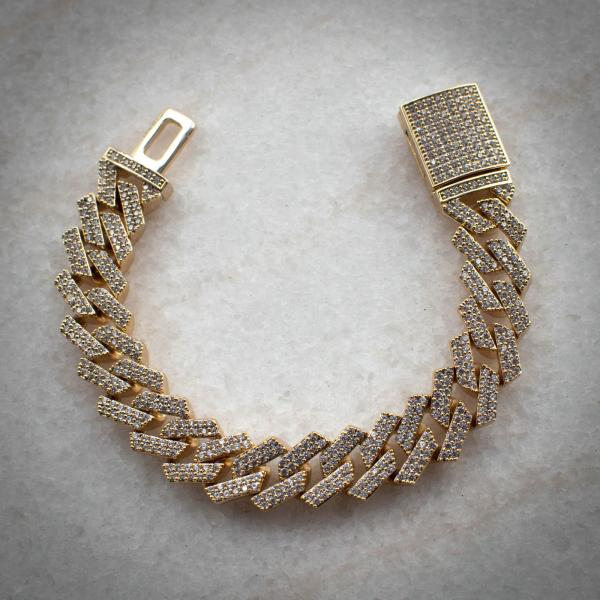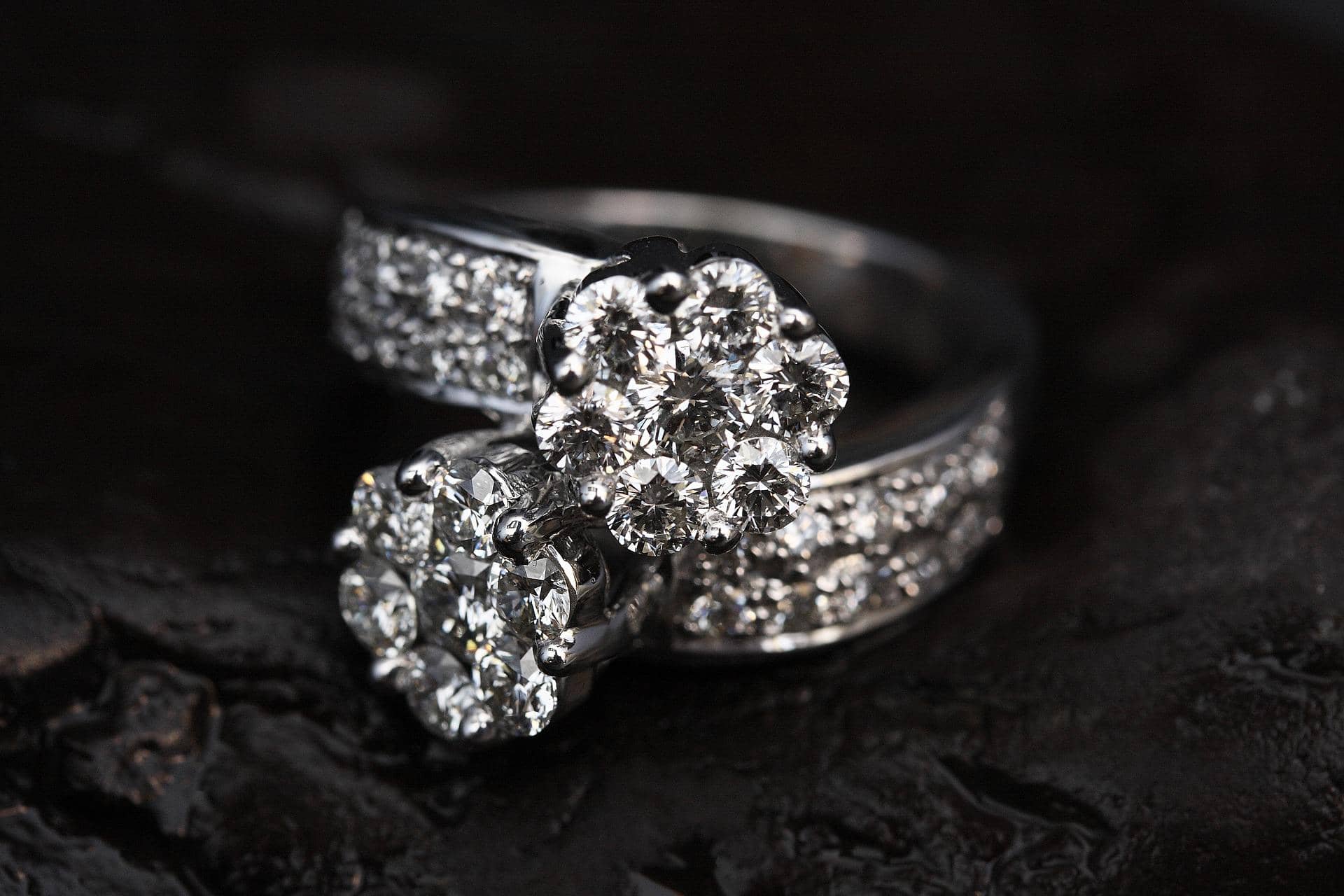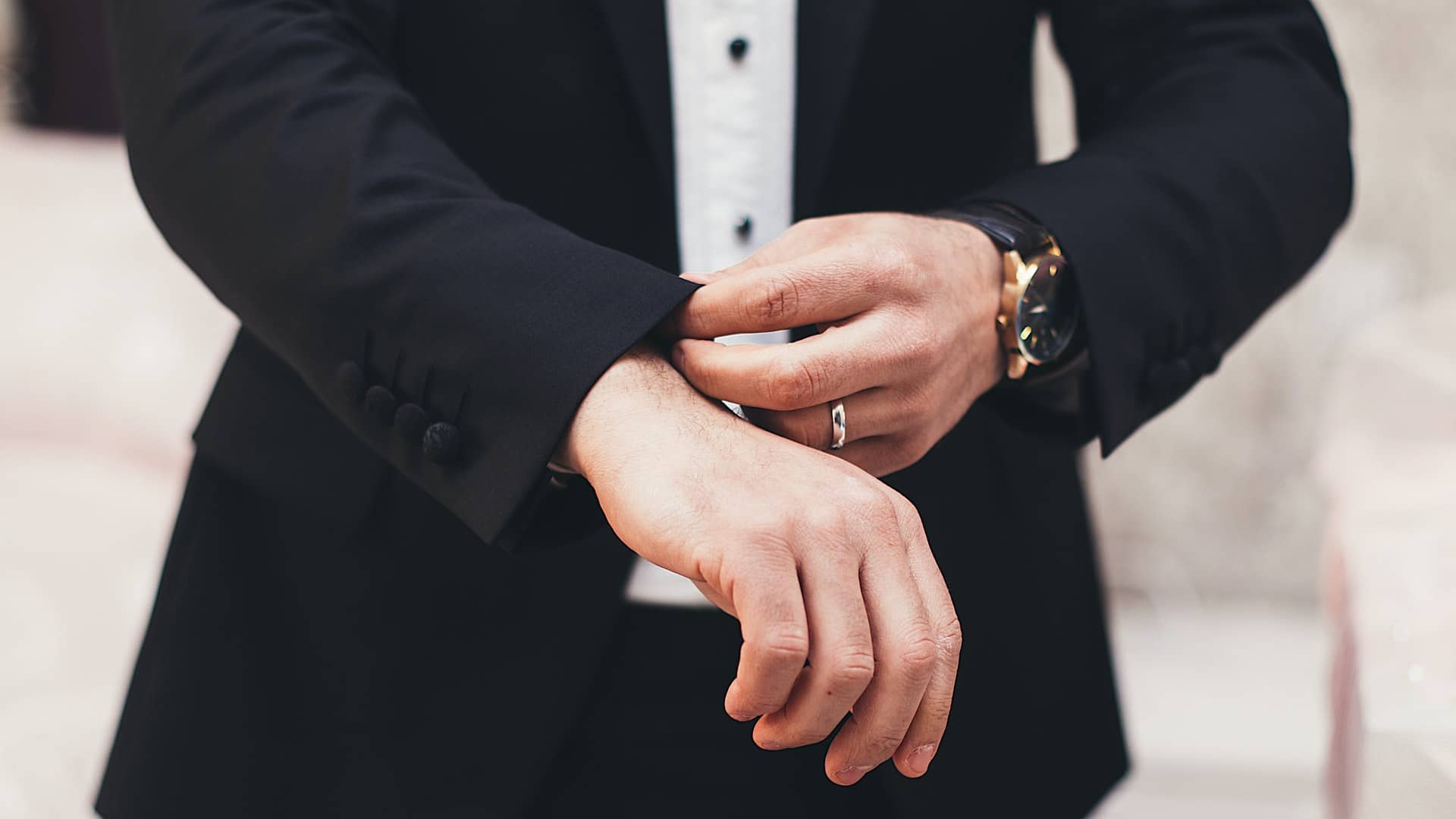Iced-out jewellery is a stunning status symbol, popularised in hip-hop culture. Crafted from real gold and covered in dazzling diamonds, each iced-out piece, be it a chain, a ring or a bracelet, is bound to captivate attention. However, contrary to the saying, not all that glitters is real gold.
With so many fakes on the market, it can be hard to identify the real and valuable pieces among the convincing costume jewellery. Luckily, is here to share tips and expert knowledge to help you spot fake-iced-out jewellery and ensure you only buy the very best.
What is Iced Out Jewellery?
“Iced out” refers to jewellery completely covered with sparkling gemstones (usually natural diamonds). Imagine a gold chain so loaded with diamonds or other brilliant stones, like moissanite, that it shines like ice.
However, to be truly considered real iced-out jewellery, the piece should be made from solid gold and studded with diamonds.
It’s not uncommon to see gold-plated iced-out jewellery either. On the face of it, gold-plated jewellery looks almost identical to real gold. However, there are many subtle differences between gold-plated and solid gold jewellery.
Gold-plated pieces are typically made from a cheaper material, such as brass, and then coated with a thin layer of gold. This makes gold-plated jewellery much less durable. Prone to scratches, likely to tarnish and with the potential to stain your skin, gold-plated jewellery might only last a few years before it looks visibly worn.
It’s advisable to choose solid gold iced-out jewellery instead to ensure the piece looks stunning for many years.
How to Identify Fake Iced Out Jewellery
When investing in a gorgeous iced-out piece, you’ll want to ensure you’re buying the real deal. However, that’s not always as simple as we’d like. Many of these fake pieces can be incredibly convincing- until the wear begins to show over time.
Avoid the iced-out dupes with our expert advice below.
Does your Iced Out Jewellery Have a Certificate of Authenticity?
A reputable jeweller will provide you with a certificate of authenticity or an insurance valuation. This document states exactly what your jewellery is made of, from the metal purity to whether your piece contains diamonds or cubic zirconia, giving you complete peace of mind in your purchase.
For diamond jewellery, in particular, a gemological certificate or report should be presented. This will tell you about the diamonds in your iced-out jewellery, covering the cut, colour, clarity and carat.
Certificates like this should be issued from a reputable source like the World Gemological Institute (WGI), which gives fair and unbiased evaluations.
Does Your Iced Out Jewellery Have a Hallmark?
Gold, silver, platinum or palladium – above a certain weight threshold – must be hallmarked. This is a legal requirement under the UK Hallmarking Act of 1973. A hallmark will tell you what metal (and metal purity) your jewellery is made from.
This includes:
- The Sponsor’s mark (the registered mark of the article for hallmarking)
- The Fineness mark (the amount of precious metal content in parts per thousand)
- The Assay Office mark (the mark of the office that assayed the authenticity of the piece)
- The date letter may also be included.
Look at our hallmark chart to help you check if your jewellery has the right stamp. If your iced-out jewellery has no clear hallmark, it’s almost definitely not made from solid gold, silver, platinum or palladium.
Check the Weight of Your Iced Out Jewellery
You can also usually spot fake gold jewellery just by its weight. Thanks to its high density, solid gold jewellery is likely to be much heavier than other metals, such as nickel. It could be a gold-plated option if your gold chain feels light to hold.
Consider The Price of Iced Out Jewellery
If you’re considering buying a piece of iced-out jewellery, do some market research to find out what the average price of the piece should be.
If a 9ct ring with around 0.5ct of real diamonds costs between £1,500 – £2,000 from a range of reputable jewellers, yet you’ve discovered a ring that purports to be the same spec for £500, likely, you haven’t found a bargain – you’ve found a fake.
Examine the Colour of Your Iced Out Jewellery
One tip we shouldn’t miss when discussing identifying fake gold jewellery is the colour.
Fake gold jewellery may be overly bright and shiny, like gold paint, or too yellow in hue. Fake jewellery may also have areas where the colour has worn off or faded, so be sure to examine your piece for discoloured patches.
The colour of real gold shouldn’t be easily changeable by chemicals. On the other hand, fake gold will darken if submerged in vinegar or stain when iodine is dropped on it. Simply place your piece in vinegar for around five minutes or drip iodine onto it to test if the metal is gold.
Use a Magnet on your Iced Out Jewellery
Another way to test your iced-out jewellery is to hold a magnet near it. Gold and silver are not magnetic metals, so the piece may be fake if it pulls toward the magnet. However, the piece may still be gold but mixed with a more magnetic metal alloy to maintain its shape, so lower-carat pieces with a higher alloy percentage would still draw toward the magnet.
Does Your Iced-Out Jewellery Fog Up?
Breathe on your diamond in an attempt to fog it up. Diamonds disperse heat quickly due to their high thermal conductivity. Therefore, if the fog clears rapidly or barely appears, then your iced-out jewellery will likely contain real diamonds. However, if the fog remains, it’s probably a fake.
Are There Scratches on Your Iced Out Jewellery?
Most people will know that diamonds only scratch diamonds. That’s because diamonds come top of the Mohs scale of mineral hardness, so they’re very hard to damage. If you notice your iced-out jewels become scratched or damaged, they’re likely made of a different gemstone altogether.
Seek the Advice of a Reputable Jeweller
A jeweller can advise whether your iced-out jewellery contains real diamonds. Jewellers have access to a professional 10x magnifying glass (called a loupe) that will help identify any inclusions, colour and the sharpness of your stone’s facets – all indicators of whether your diamond is real or not.

Fake Jewellery FAQs
Why should I buy real iced-out jewellery?
Iced-out jewellery typically signifies wealth and status. Gold chains dripping with diamonds have been loved by rappers and hip-hop artists since the 70s – and the trend shows no sign of slowing down.
Though fake iced-out jewellery displays much of the same extravagance, those looking to showcase splendour should only buy solid gold encrusted with natural, certificated diamonds.
You might not be able to identify the difference immediately, but those with a keen eye for the real deal can spot the sparkle of an authentic diamond. Plus, real iced-out jewellery is crafted to last you a lifetime.
If you’re looking to treat yourself or a loved one to a stand-out piece for their jewellery collection, you should always select solid gold that is durable, hard wearing and ready to be treasured for years.
Check out our iced-out jewellery guide for all you need to know about this statement style.
Should I wear fake jewellery?
‘Fake’ jewellery doesn’t always translate to low-quality jewellery – though it’s important which elements of your jewellery you choose to upgrade. A gold-plated ring with cubic zirconia is no comparison to a high-quality 18ct solid gold ring studded with diamonds. Some hints and tips will help you add to your iced-out jewellery collection without breaking the bank.
If you’re looking for an affordable jewellery option, swapping diamonds for cubic zirconia could be a cost-effective yet stylish choice. The main advantage of cubic zirconia jewellery is that they are cheaper than diamonds. In some cases, diamonds can be up to four times more expensive – particularly if they’re natural diamonds.
Cubic zirconia, though a man-made crystal, can also be made to an extremely high standard, to the point where it’s almost impossible for the human eye to tell the difference between CZ and diamond.
Choosing solid gold instead of gold-plated jewellery where possible is also a good idea. Cheaper alternatives such as 9ct gold will make a difference to your price point while offering higher-carat gold jewellery quality and durability.
Are there any specific hallmarks to look for when checking if jewellery is fake?
If a piece has been assayed and hallmarked in the UK, it will bear the mark of the Sheffield, London, Birmingham or Edinburgh assaying office. You can find the marks for these offices in our hallmark guide.
If the mark is not from one of these offices, it may be an international piece, so it is best to search the symbol to see if it belongs to the assaying office of another country. A hallmark that is not from an official assaying office simply can’t be trusted.
Is a certificate of authenticity reliable?
A certificate of authenticity indicates that your iced-out jewellery is real. However, it should not be relied upon as your only proof.
Certificates can be falsified, so you should only trust certificates from well-established and trusted jewellers and look for other indicators such as hallmarking and a WGI certificate attesting to the quality of the gemstones.
Are there reputable brands and sellers to trust?
You should only buy iced-out jewellery from reputable jewellers to ensure you get the right quality of jewellery made from the precious metals and stones you were promised.
Here are our top tips for choosing a reputable iced-out jeweller:
Long-established and well-known brands have built trust with customers for decades and sometimes longer, meaning you can often feel more secure in your faith when buying iced-out jewellery from them.
A great option in terms of trust is to get recommendations, such as from family and friends. If someone you know is always adorned with immaculate iced-out pieces, they may be the person to go to when asking where to find authentic jewellery.
If buying online, look for websites that are assay assured. Assay assurance is a jewellery-specific digital Trustmark backed by all four UK assay offices.
On top of this, always make sure to bear in mind the following:
- Ensure the jeweller offers hallmarked jewellery and, preferably, an insurance valuation. This gives you full peace of mind you’re walking away with exactly what you paid for.
- Look into the product details. You should know exactly what carat and diamond grade you’re buying. If a jeweller lists ‘costume’ jewellery, it will likely be gold-plated.
- Read the reviews on a trusted review site such as Trustpilot. Find out what previous customers have to say – this will give you an idea of whether the jeweller is reputable.
- Ask questions. If you’re eyeing up a piece of jewellery, but you’re unsure of the diamond carat, colour or clarity, a reputable jeweller should always be more than happy to help.



